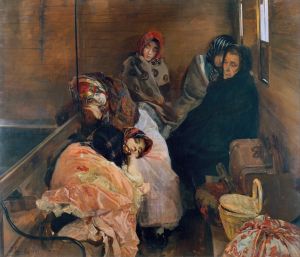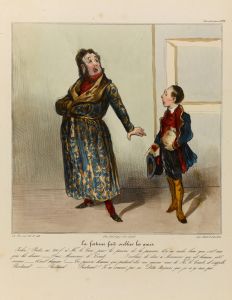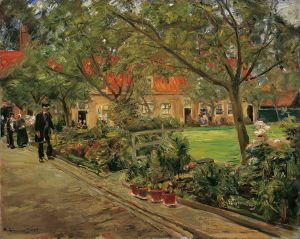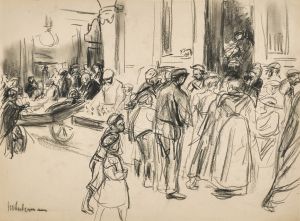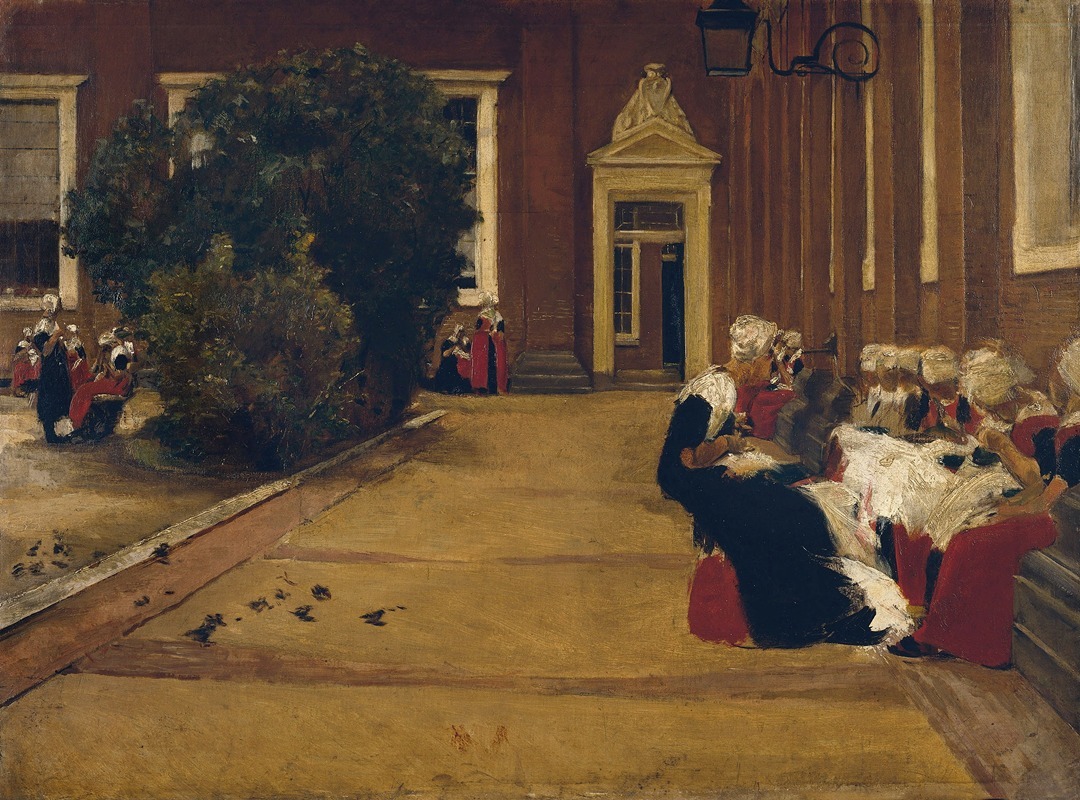
Orphan Girls in Amsterdam
A hand-painted replica of Max Liebermann’s masterpiece Orphan Girls in Amsterdam, meticulously crafted by professional artists to capture the true essence of the original. Each piece is created with museum-quality canvas and rare mineral pigments, carefully painted by experienced artists with delicate brushstrokes and rich, layered colors to perfectly recreate the texture of the original artwork. Unlike machine-printed reproductions, this hand-painted version brings the painting to life, infused with the artist’s emotions and skill in every stroke. Whether for personal collection or home decoration, it instantly elevates the artistic atmosphere of any space.
"Orphan Girls in Amsterdam" is a painting by the German artist Max Liebermann, created in 1885. Liebermann was a leading figure in the German Impressionist movement and is often associated with the Berlin Secession, a group of artists who broke away from the traditional academic art institutions in Germany.
The painting depicts a group of orphan girls in the courtyard of the Amsterdam Orphanage. The scene is characterized by its naturalistic portrayal of the children, who are dressed in simple, uniform clothing and engaged in various activities. The use of light and shadow in the painting highlights Liebermann's skill in capturing the everyday life and the quiet dignity of his subjects.
Max Liebermann was known for his interest in social realism, and "Orphan Girls in Amsterdam" is a prime example of this focus. He often chose to depict scenes of ordinary people, particularly those from the working class or marginalized communities, in their daily environments. This painting reflects his commitment to portraying the human condition with empathy and respect.
The Amsterdam Orphanage, where the scene is set, was a well-known institution in the city, providing care and education for children who had lost their parents. Liebermann's choice to paint this subject matter aligns with his broader artistic goals of highlighting social issues and the lives of the less fortunate.
"Orphan Girls in Amsterdam" is notable for its composition and the way Liebermann captures the light filtering through the trees in the courtyard. The painting's color palette is subdued, with earthy tones that add to the sense of realism and the somber mood of the scene. The girls are shown in various states of activity, some playing, others sitting quietly, which adds a dynamic quality to the composition.
Liebermann's technique in this painting demonstrates his mastery of brushwork and his ability to convey texture and movement. The attention to detail in the girls' clothing and the surrounding environment showcases his observational skills and his dedication to depicting life as it is.
This painting is part of a larger body of work by Liebermann that focuses on similar themes of everyday life and social realism. His works have been exhibited in numerous galleries and museums around the world, and he is considered one of the most important German artists of the late 19th and early 20th centuries.
"Orphan Girls in Amsterdam" remains an important piece in the study of Liebermann's oeuvre and the broader context of German Impressionism. It reflects the artist's deep empathy for his subjects and his commitment to using art as a means of social commentary. The painting continues to be appreciated for its artistic merit and its poignant depiction of childhood and resilience.





